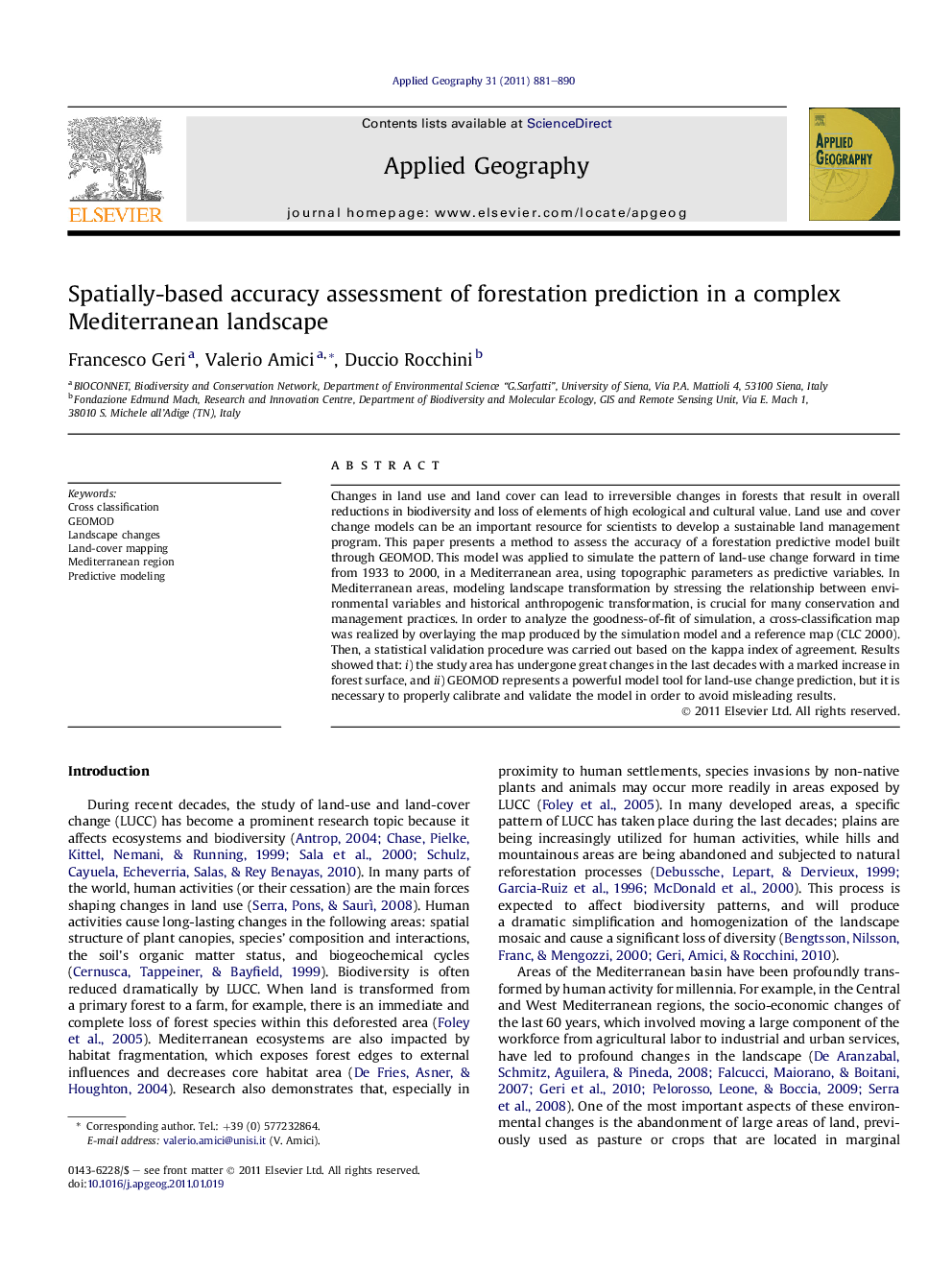| Article ID | Journal | Published Year | Pages | File Type |
|---|---|---|---|---|
| 83616 | Applied Geography | 2011 | 10 Pages |
Changes in land use and land cover can lead to irreversible changes in forests that result in overall reductions in biodiversity and loss of elements of high ecological and cultural value. Land use and cover change models can be an important resource for scientists to develop a sustainable land management program. This paper presents a method to assess the accuracy of a forestation predictive model built through GEOMOD. This model was applied to simulate the pattern of land-use change forward in time from 1933 to 2000, in a Mediterranean area, using topographic parameters as predictive variables. In Mediterranean areas, modeling landscape transformation by stressing the relationship between environmental variables and historical anthropogenic transformation, is crucial for many conservation and management practices. In order to analyze the goodness-of-fit of simulation, a cross-classification map was realized by overlaying the map produced by the simulation model and a reference map (CLC 2000). Then, a statistical validation procedure was carried out based on the kappa index of agreement. Results showed that: i) the study area has undergone great changes in the last decades with a marked increase in forest surface, and ii) GEOMOD represents a powerful model tool for land-use change prediction, but it is necessary to properly calibrate and validate the model in order to avoid misleading results.
► GEOMOD is a straightforward unidirectional linear change modelling tool. ► The model showed great changes with a marked increase in forest surface. ► The surface agreement of the GEOMOD simulation is high. ► The validation phase showed that the simulated spatial arrangement of forests leads to spatial bias. ► There is the need to properly calibrate and validate the model.
